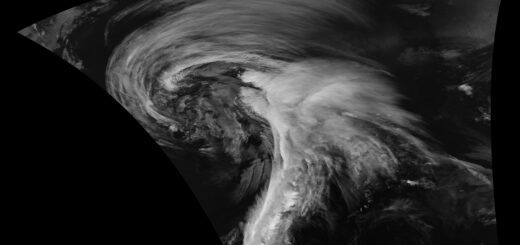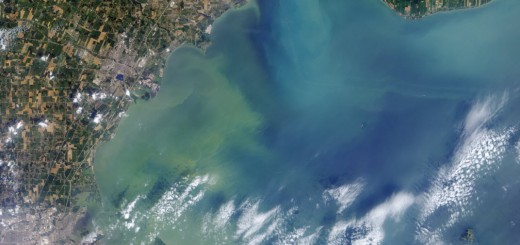The Himalayas are home to many glacial lakes known to be at risk of melting, leading to outburst floods. Historically, these glacial lake outburst floods (GLOFs) have had devastating impacts on nearby towns and cities. As a result of the damage done in the past, effective prevention and the establishment of an early warning system have become urgent priorities for the region.
A 2022 article published in the International Journal of Disaster Risk Reduction reviews existing early warning systems in glacial lakes and urges impacted regions to establish comprehensive solutions to mitigate damages from flooding. Developing an EWS has the potential to prevent the loss of life and reduce the economic and societal impacts of disasters.1
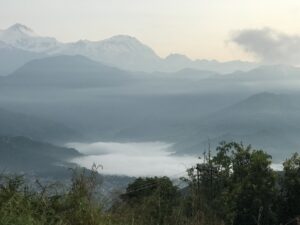
Mist over the Himalayas- and Pokhara lake. (Credit: Shankar S. via Flickr CC BY 2.0)
Proposed Early Warning System in the Himalayas
The article builds off existing systems and the Second Tibetan Plateau Scientific Expedition and Research program framework to develop and implement a monitoring and EWS for Cirenmaco. Located in Nyalam County, Cirenmaco is a transboundary high-risk glacial lake in the central Himalayas.
The system consists of monitoring lake-level change, end-moraine displacement, ice collapse and downstream runoff. Integrating these systems with real-time potential allows the data to be transmitted to a data center via the Beidou and Inmarsat satellites and a mobile network. Continuous, remote data allows researchers to monitor conditions and raises alarms regarding the precursors of GLOFs and ice collapse. This data can then be communicated to downstream communities, avoiding casualties.
The early warning system is a practical solution to mitigating the potential threat GLOFs pose. At the same time, these systems gather valuable environmental data in high-altitude areas. The article states, “The Cirenmaco EWS serves [as] an effective demonstration for the construction of similar projects to prevent and mitigate GLOFs in the Himalayas.” 1
Implementing an Early Warning System in Glacial Lakes
In 2010, a GLOF triggered an ice avalanche that impacted the downstream city of Carhuaz. As a result, 22 buildings, 100 km of roads and 100 casualties were reported following the event. At the time, there was no early warning system (EWS) in place, so the city was ill-prepared for the 2010 incident.
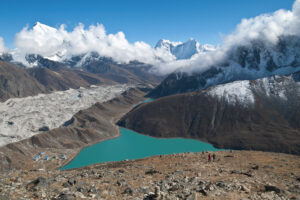
The summit of Gokyo Ri. Ngozumpa glacier, the largest and longest glacier in the Himalayas, is right below, along with commanding views over nearby Cholatse, Taboche, Kangtega, Thamserku and other peaks. Gokyo Ri, Gokyo Lake, Nepal, Himalayas. (Credit: Vyacheslav Argenberg via Wikimedia Commons CC BY 4.0)
Following the event in Carhuaz, the local government implemented an early warning system in 2011-2012 to prevent potential disasters. The system was the first of its kind: a glacial lake early warning system with a fully functional service system. This system included risk and hazard assessment, monitoring and warning services, dissemination and communication and response capabilities.
In terms of monitoring and warning services, there were five major components:
- Glacier and lake monitoring station: Comprised of four geophones and two cameras that record indicators of floods or avalanches (ground shaking and glacier–glacial lake dynamics).
- Hydrometeorological monitoring station: Located downstream of the lake outlet.
- Repeater station: Transmits environmental data to the information center.
- Data center in the city of Carhuaz: The data center in the city of Carhuaz stores and evaluates transmitted data.
- Warning station: Responsible for issuing a warning signal.
There are two types of early warning systems that may be installed in response to GLOFs or other disasters. A semi-automatic system relies on staff assistance in order to function. Alternatively, fully automatic systems “consist of real-time monitoring of the glacial lake and its parent glacier, hydrometeorological monitoring, data transmission and storage and early warning.” 1
When constructing the early warning system in Cirenmaco, the article states ten specifics components of their advanced EWS:
- Glacial lake, related parent glacier, and downstream river monitoring;
- Water-level monitoring of glacial lakes and downstream rivers;
- Dynamic monitoring of moraine dam;
- Meteorological monitoring;
- Satellite Remote Sensing Image Monitoring;
- Bathymetric survey for the lake and topographic mapping of the lake and its surroundings;
- Data transmission;
- Data Center;
- Warning system;
- Disaster mitigation plans and evacuation drills for GLOFs.
Details on each component can be found in the full study here. 1
These systems may be costly to establish, but they will be paid off in saved lives and reduced destruction. Cities surrounding the Himalayas could benefit from an early warning system that provides people with the opportunity to respond to emergencies before it is too late.
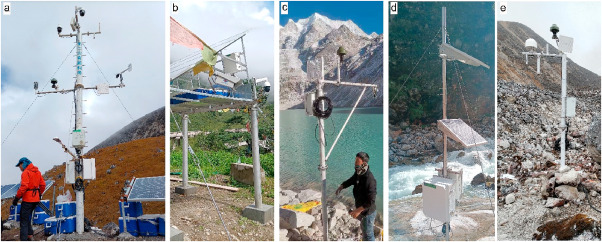
Early warning system installed at Cirenmaco. A total of nine different services are contained in this project. These include (a) monitoring of the lake and its parent glacier, (b) monitoring of the environment of the downstream river, (c) water level monitoring of the glacial lake, (d) water level monitoring of the downstream river and (e) moraine dam dynamic monitoring. (Credit: Wang et al. 2022)
Source
- Weicai Wang, Taigang Zhang, Tandong Yao, Baosheng An, Monitoring and early warning system of Cirenmaco glacial lake in the central Himalayas, International Journal of Disaster Risk Reduction, Volume 73, 2022, 102914, ISSN 2212-4209, https://doi.org/10.1016/j.ijdrr.2022.102914.






